Last year in May, I chose a sunny weekend to visit Nakskov, the largest town on Lolland. I knew spending a day there wouldn’t be enough, so I booked myself into a campsite, brought along my little green tent and enjoyed two nights of pure tranquility by Nakskov Fjord.
A quiet evening at Hestehovedet
I took off straight away after work on the Friday, caught the train to Nakskov and walked four kilometres out to Nakskov Fjord Camping, located beautifully behind a sandy beach at Hestehovedet.
I had missed camping and having time to relax in nature, so I felt completely at ease when I reached the campsite. I set up my tent and wandered down to the shore, carrying my favourite book. This was where I spent the rest of my evening. Perched on a bench, enjoying my dinner and book while overlooking the island-dotted fjord and Lolland’s longest pier. As I was walking out on the pier, I thought back to my time on Rügen where the coastline is dotted with long piers, although they’re much more crowded than this one at Hestehovedet. I enjoyed the calmness as I peered out at Enehøje and the other small islands in the distance where I’d be heading out on a boat trip the following day.
Right next to the pier lies Kuddeholm, a tiny uninhabited island, which is said to hold a large treasure buried by a homeless man who lived in the bushes in the 1980’s. The islet has a small network of narrow trails along its coastline and into the wild and overgrown interior. It turned out to be the perfect place for a little evening hike before returning to my tent and calling it a night as dusk set in.
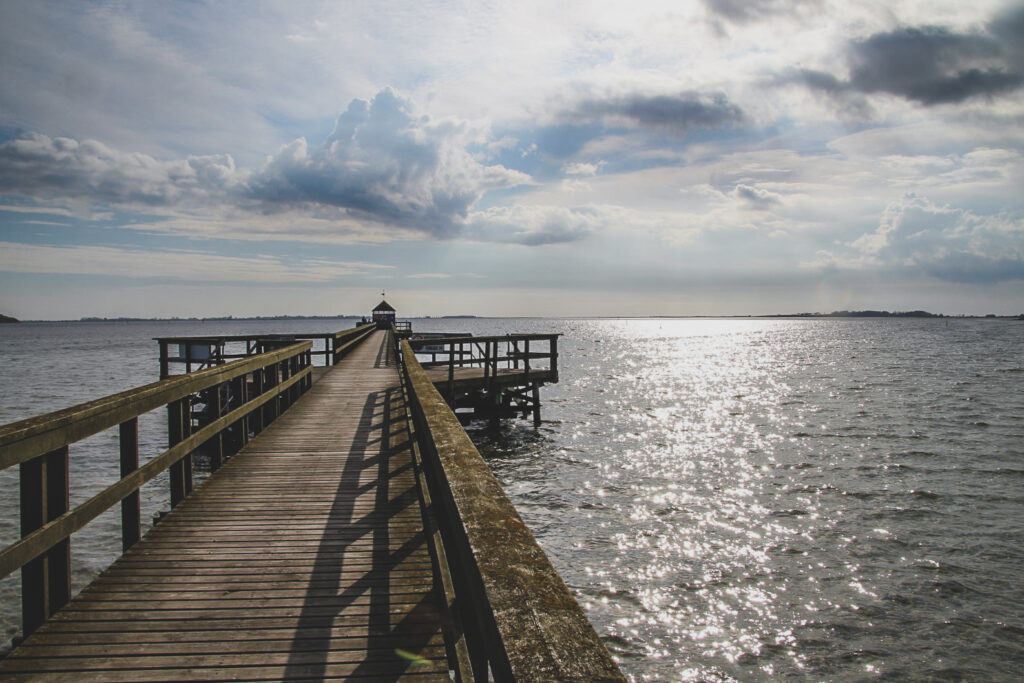
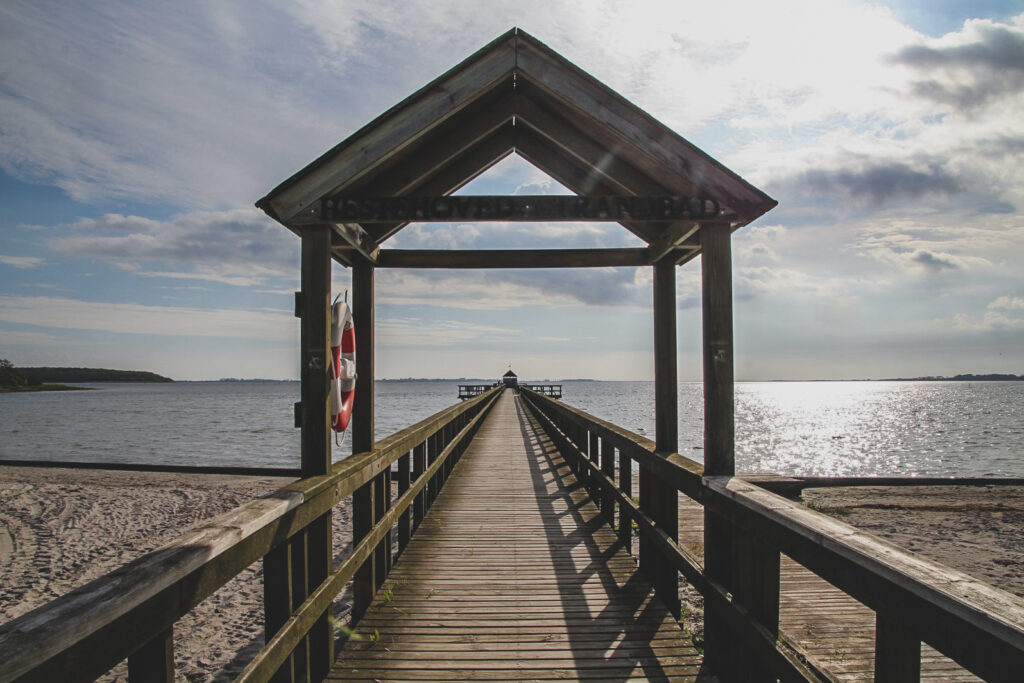
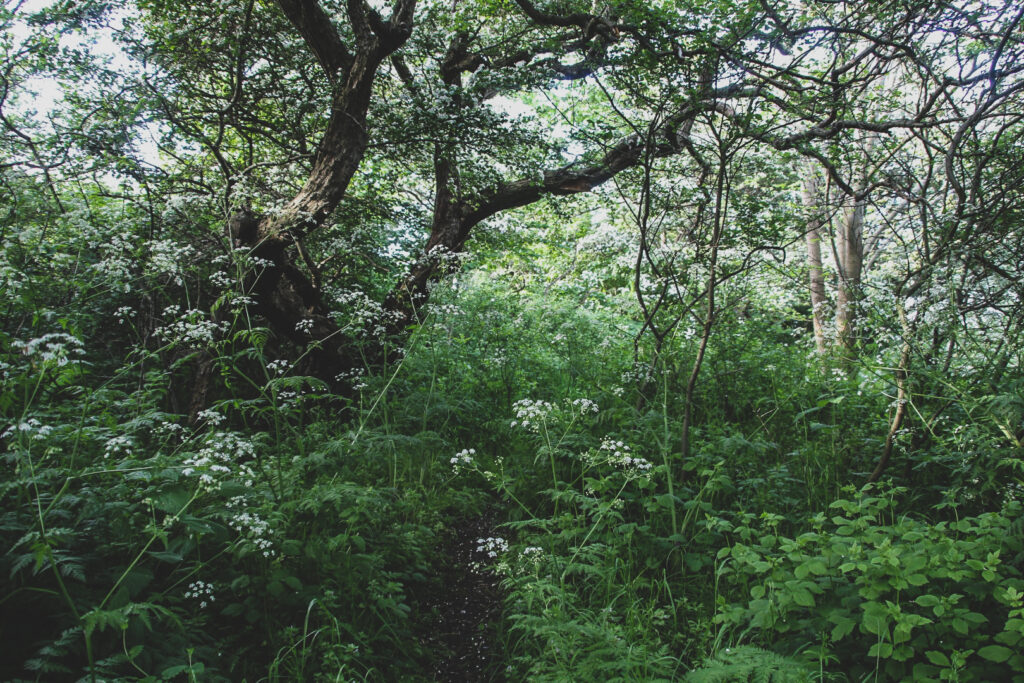

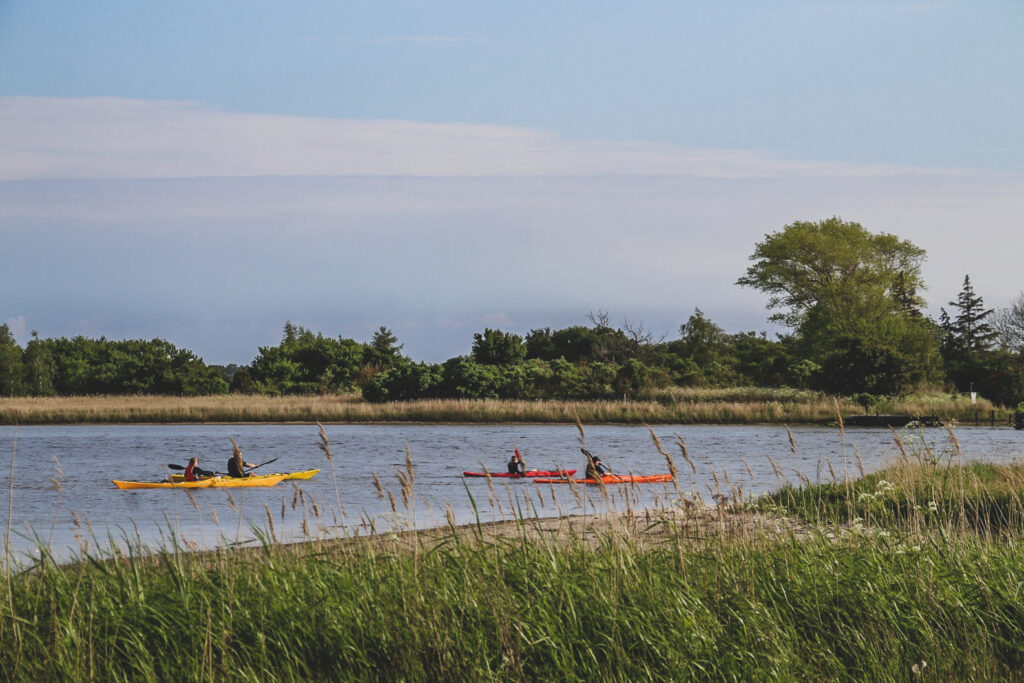
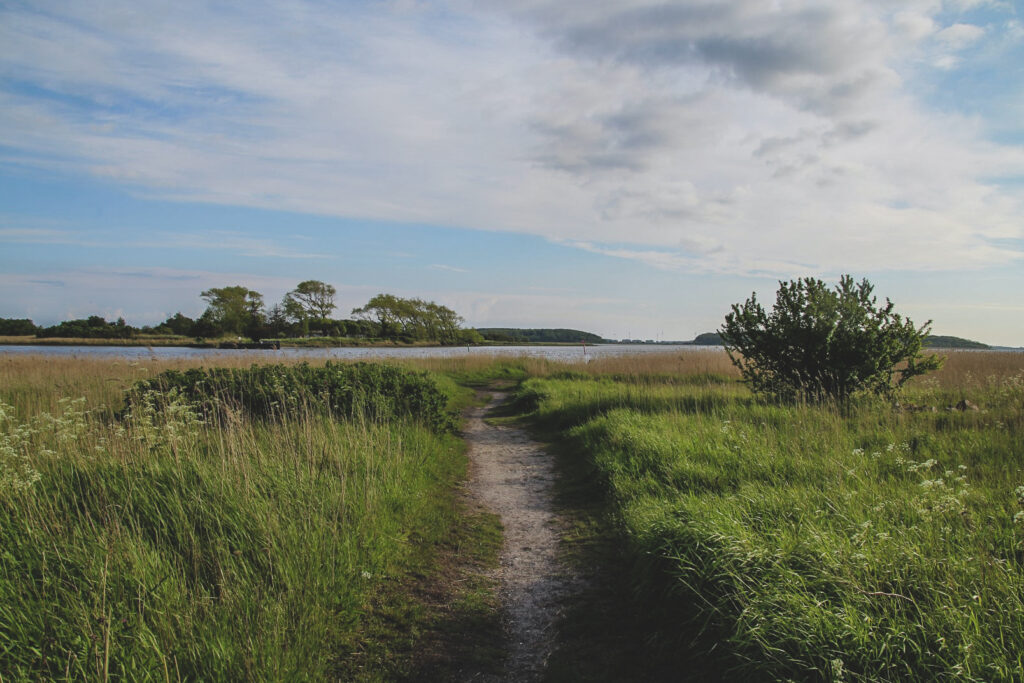
A boat trip around Nakskov Fjord
I woke up at the crack of dawn the next morning, and walked into Nakskov to catch the historic post boat Vesta at 9 AM. The post boat has provided the small islands of the fjord with provisions and mail since 1938, but today, it serves mainly as a tour boat.
It was a calm and cloudy morning, but sun was on the horizon. I had booked a trip to the island of Enehøje and to Albuen, my favourite place on Lolland, which I first visited in March last year. I wasn’t the only one out hoping for good weather, in fact the little boat was full to the brim, but I did secure a seat at the very back with a full view on the beautiful scenes that played out as we sailed through the fjord. We sailed close by the islands of Vejlø and Slotø, the latter of which is a small uninhabited island with the ruins of the late Medieval Engelsborg Castle. I was able to snap a few photos as we sailed by, but I hope to step foot on the island one day so I can explore the castle ruins.

It wasn’t long until we reached Enehøje, the largest island in the fjord, which is known for its varied nature with soft rolling hills, beach lagoons, cliffs, small lakes and forests. The name Enehøje means ‘one hill’ and refers to the highest point on the island at 16 metres above sea level.
Enehøje is owned by the state although the buildings are privately owned. Nobody lives there full-time, but it is possible to stay overnight in a shelter in the middle of the island. It was actually my original plan to do this, but there was no way for me to be picked up the next day, so I had to settle with just 45 minutes to rushingly explore the island.
Enehøje is also renowned for being the home of the Arctic explorer Peter Freuchen, who lived there from 1926-40. A sculpture of him is found at the island’s highest point, next to a monument made from whale jawbones, which was raised by Freuchen. He was also responsible for painting the old smithy from 1762 cobalt blue, apparently to keep gnats away!
A guide from the boat took everyone on a tour of the island, but since we had such a short amount of time, and I desperately wanted to explore it all, I decided to split from the group and go off on my own. I didn’t regret my decision one bit as it allowed me to explore much further than the group.
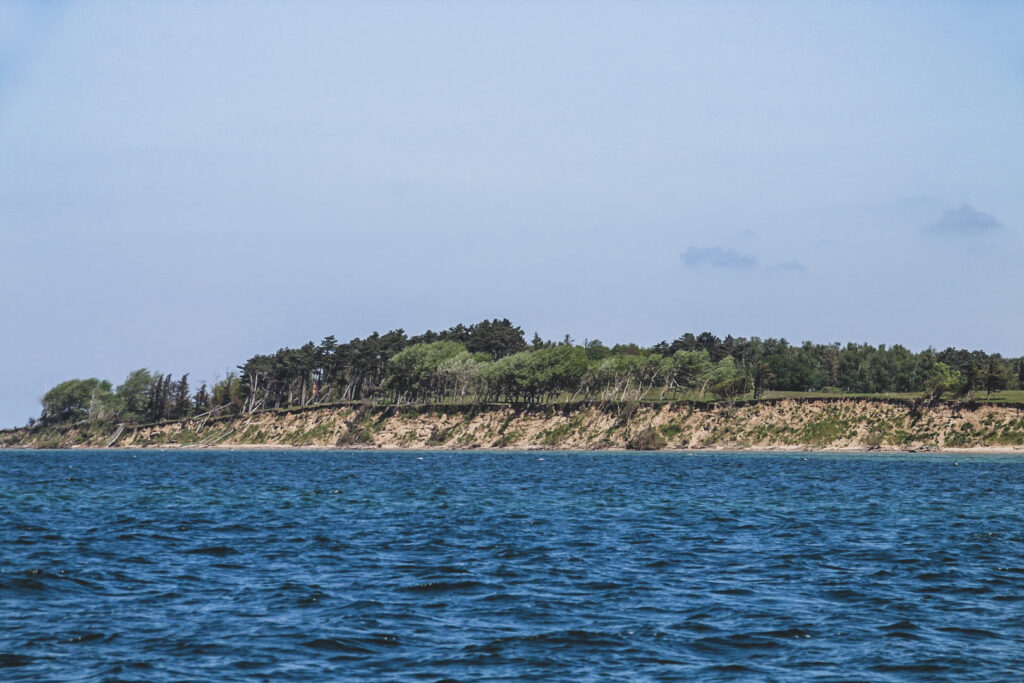

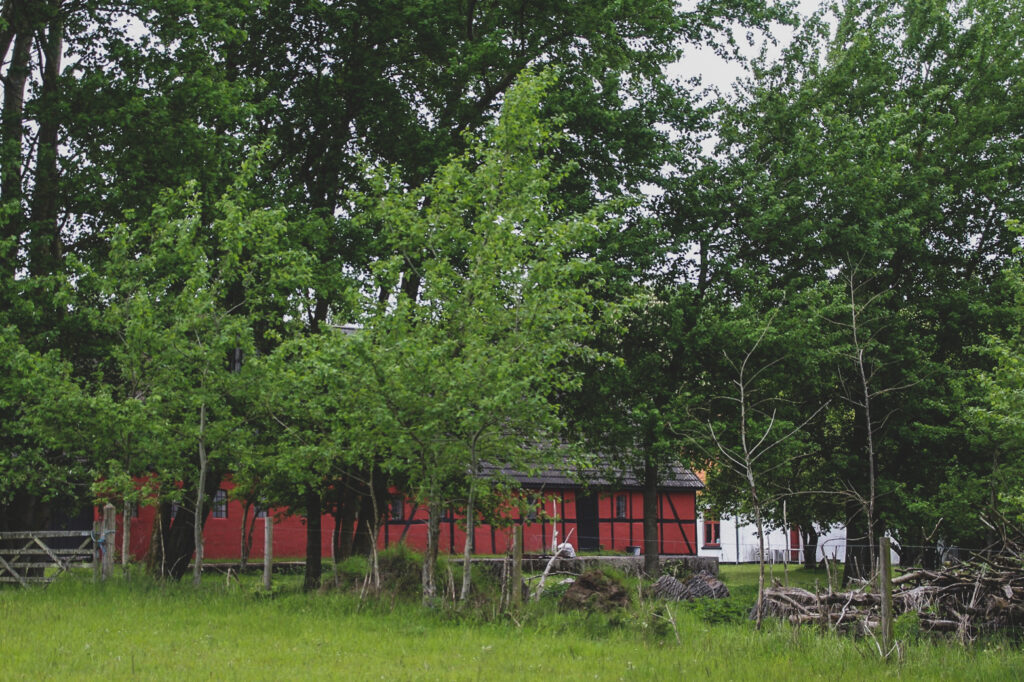


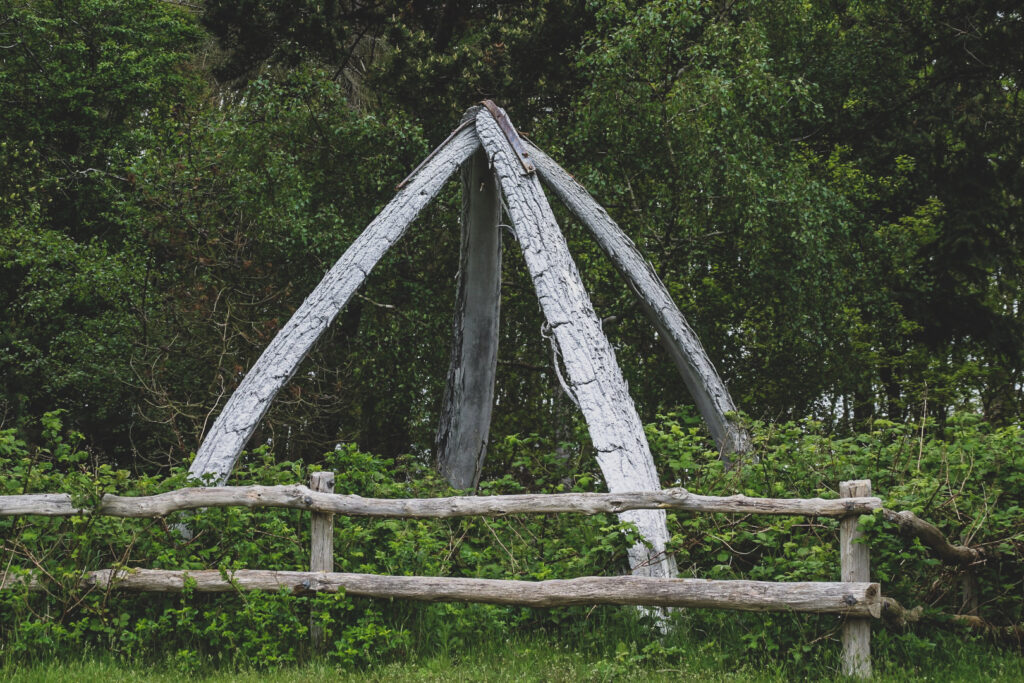

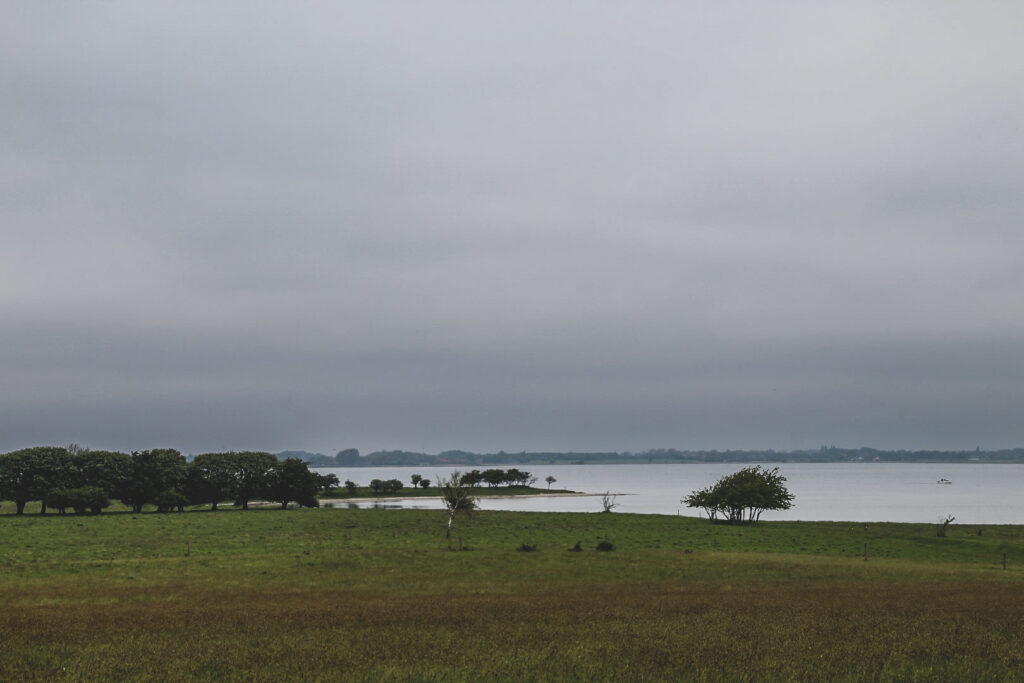
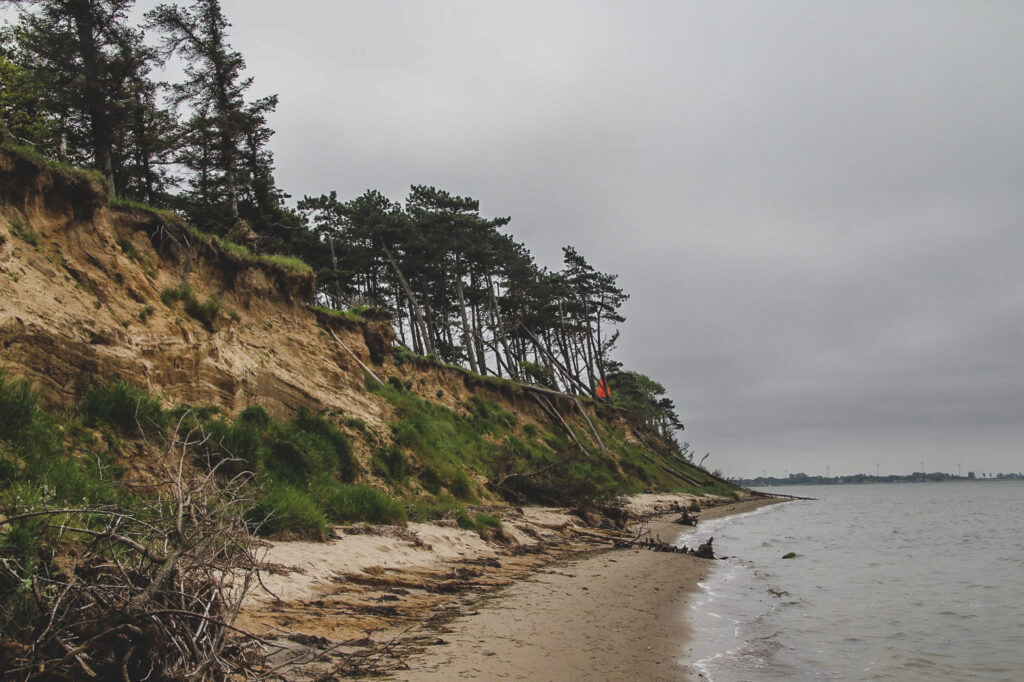


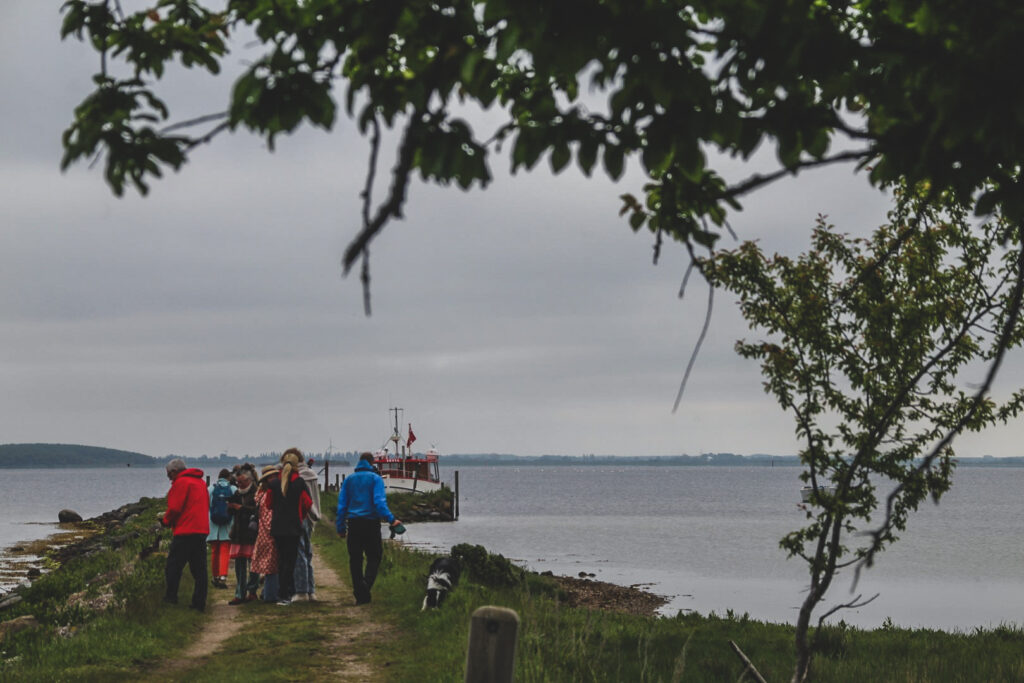
After a much too short visit to Enehøje, it was time to head to the second destination of the boat trip: Albuen, a headland protruding far into the fjord, with unique flora and fauna and cultural history that makes it one of the most exciting places to visit on Lolland. Even though it hadn’t been long since my first visit, I was overjoyed to return. Not least because Lodshuset, the former shelter for maritime pilots was open, so I got to explore something new. It’s possible to rent the old house, and a little family had done just that. I met them as they were packing up their stuff, getting ready to leave, and I asked if I could take a look around. With the historic interior still intact, I felt like I had entered a time machine and gone back a hundred years. Right beside the historic building stands the viewing tower, Udkiggen, which I somehow also missed the last time I was there. It offered an incredible view over the headland, and is certainly not to be missed!
Once again, I strayed from the group, and set off on a little hike by myself to make the most of our hour on Albuen. I revisited all of my favourite places on the headland: the tiny abandoned village where the houses are now used as summer homes, the wooden cross that stands in the middle of Albuen marking the spot of a former chapel, and the remains of a Medieval herring market from Albuen’s heyday. The promised sun finally came out as I was gallivanting around. It was lovely to see Albuen in its summer bloom.
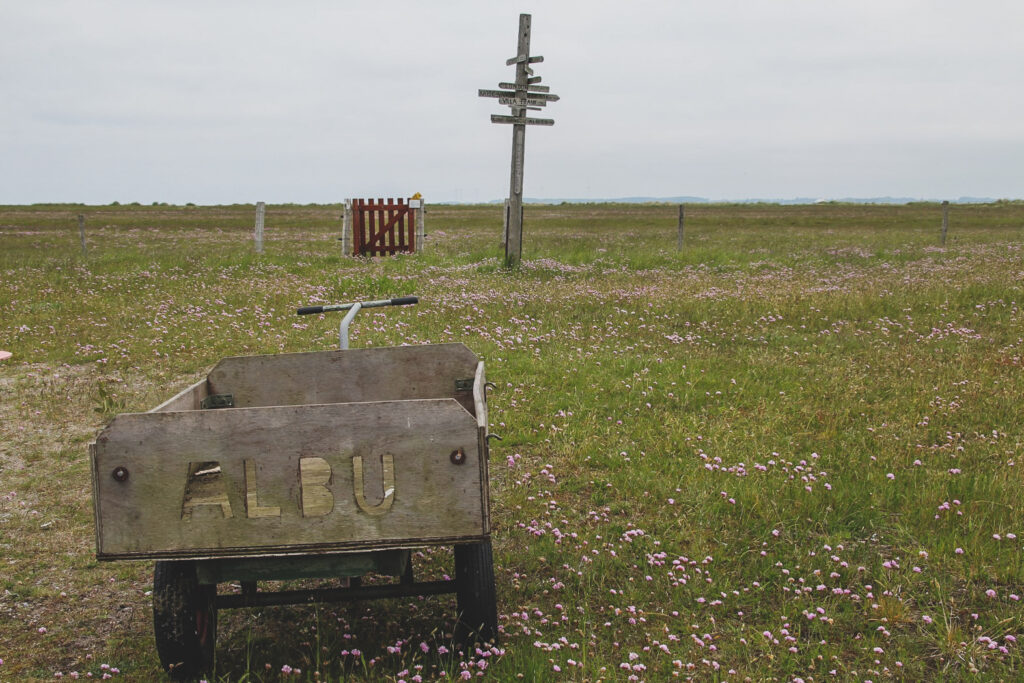
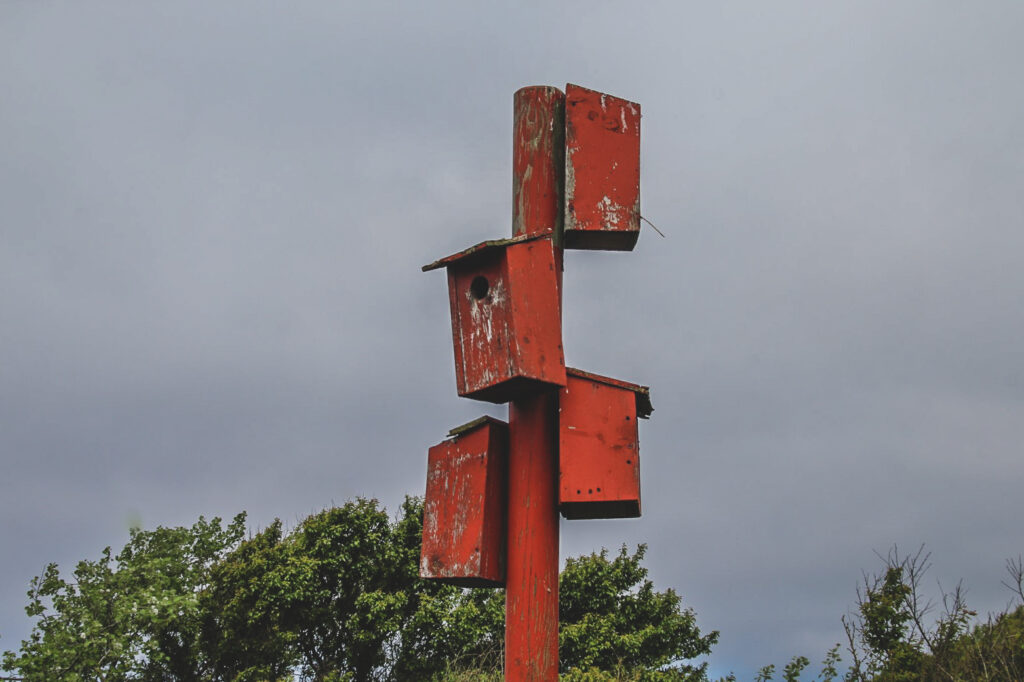



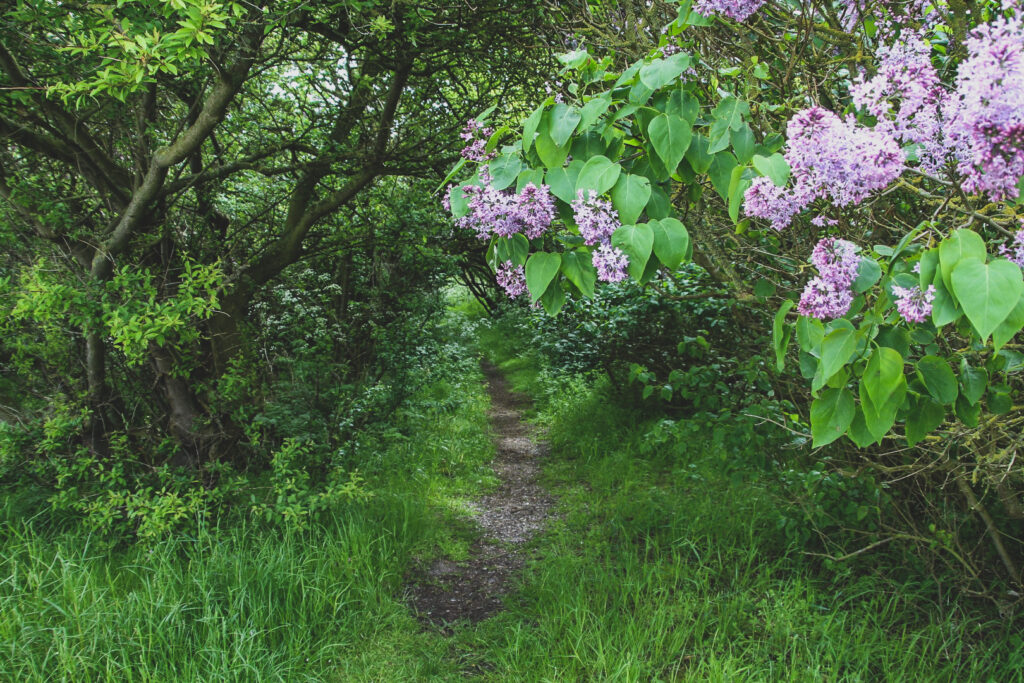

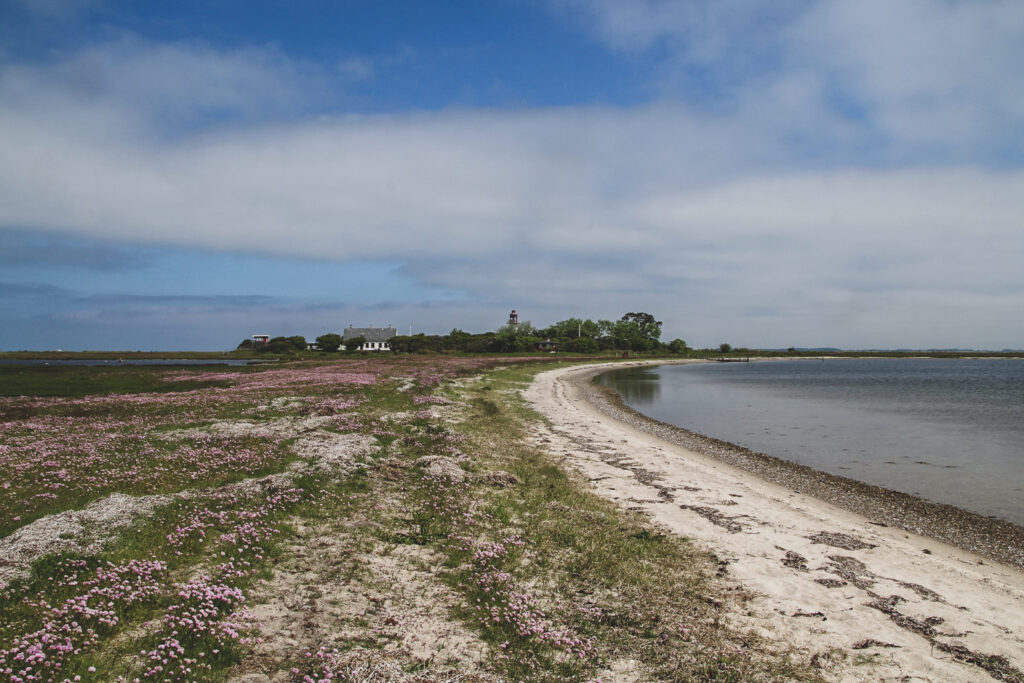
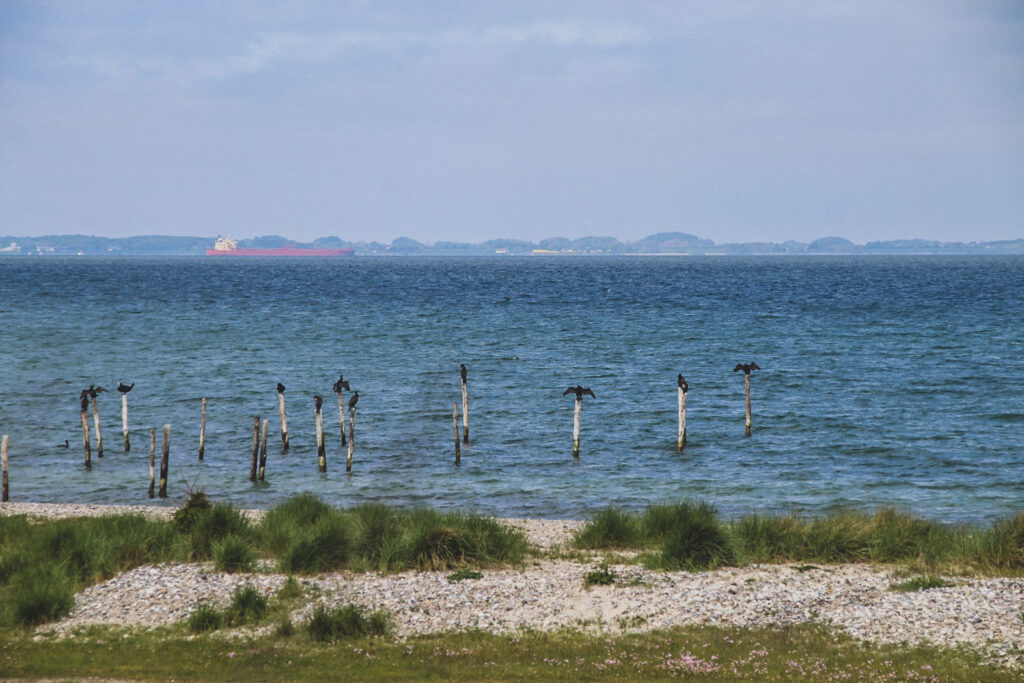

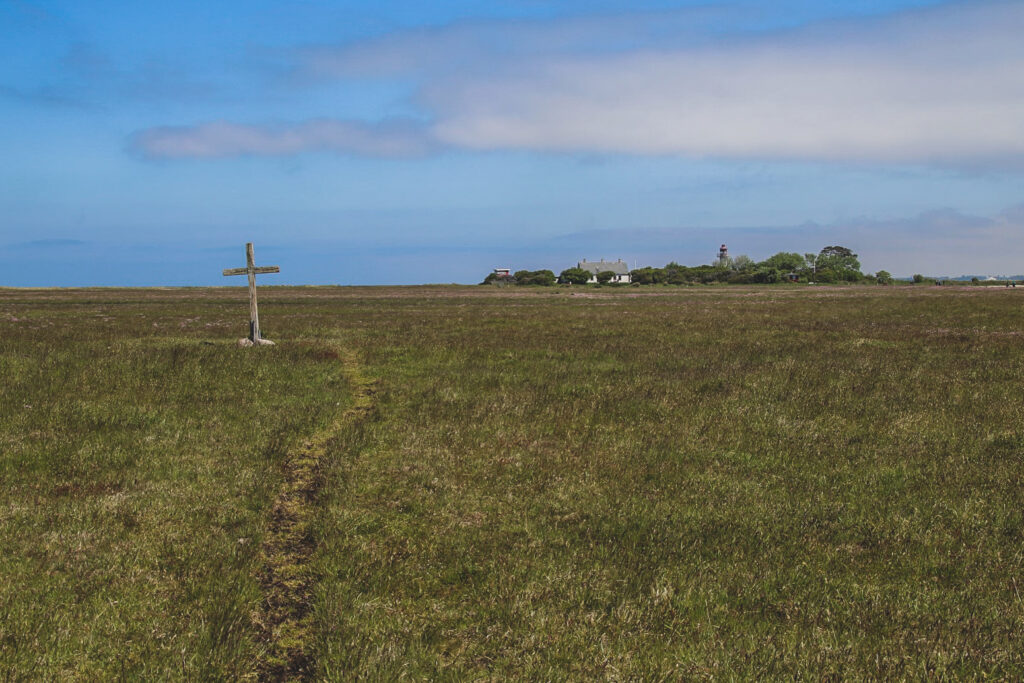
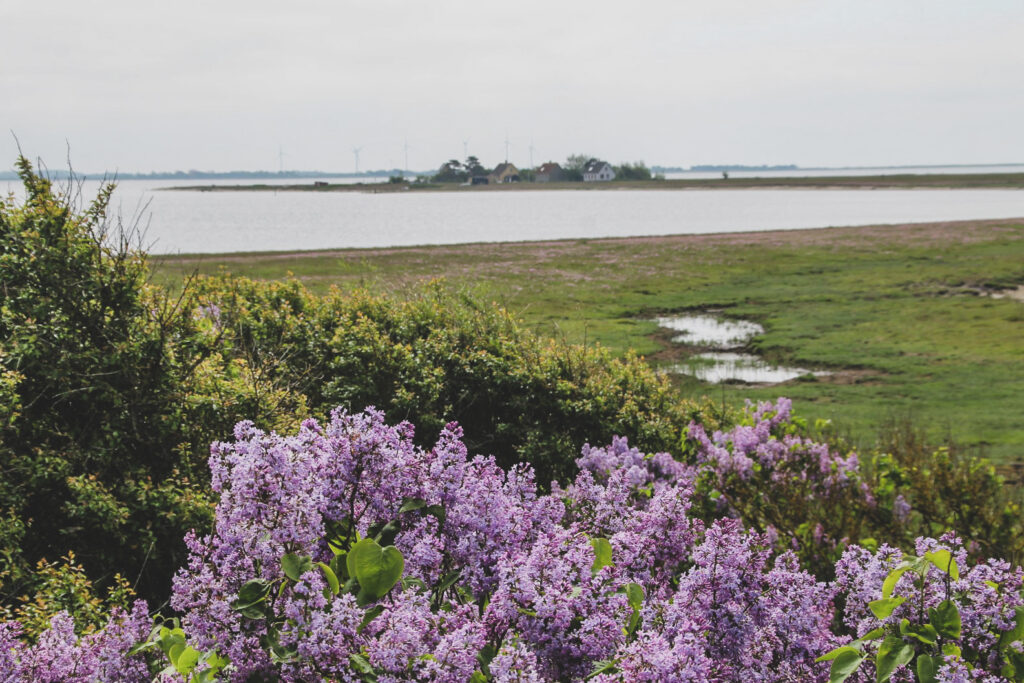
Exploring Nakskov, the old and charming and the new and ugly
I returned back to Nakskov in the early afternoon, and spent the rest of the day exploring the town. Nakskov was once a thriving trade and industrial centre, and it’s still home to the largest sugar factory in Denmark, but its heyday is long bygone and it shows in the many abandoned buildings that line the streets.
Despite this fact, Nakskov is a beautiful town full of historic buildings and a cozy atmosphere. However, the old town centre stands in harsh contrast to the industrial area by the harbour which is a true eyesore. If we disregard this area of Nakskov, I think it’s one of the most beautiful towns on Lolland – only surpassed by Nysted.
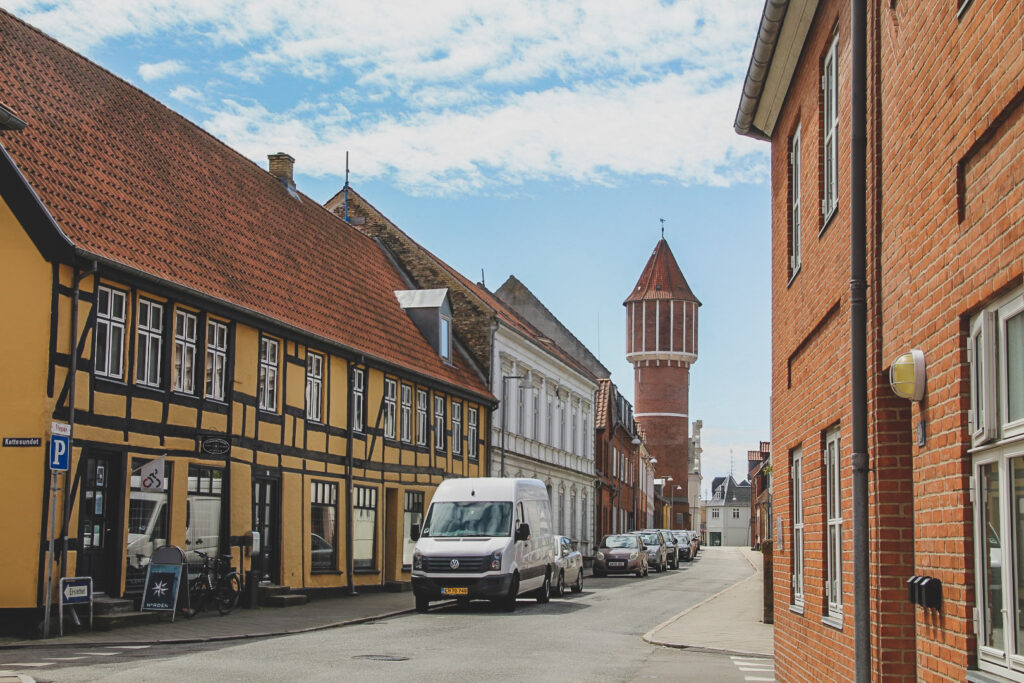
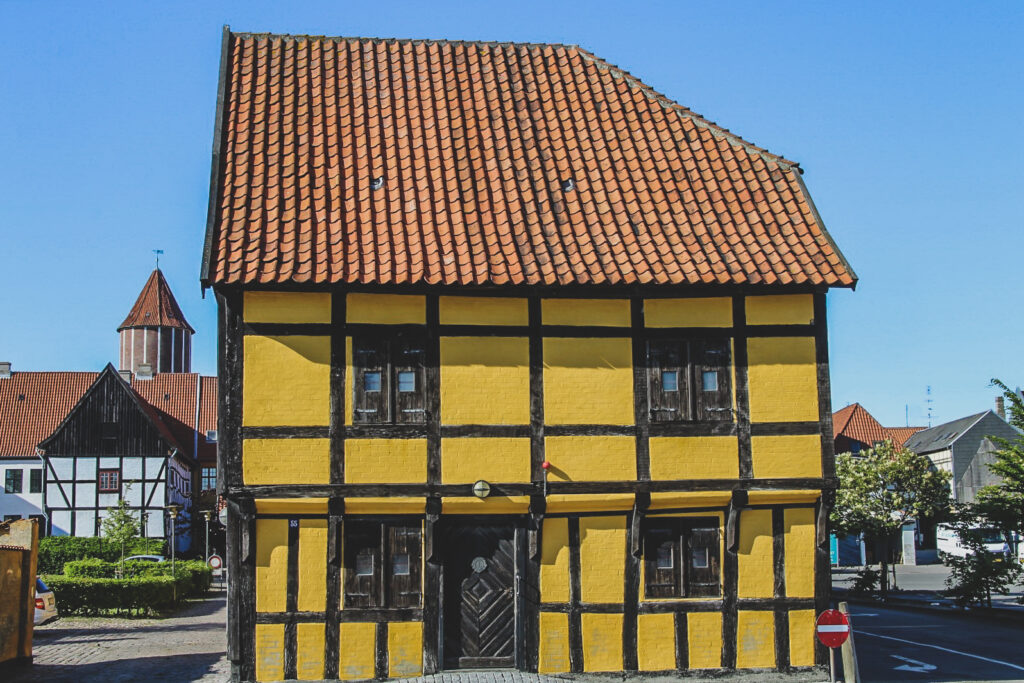
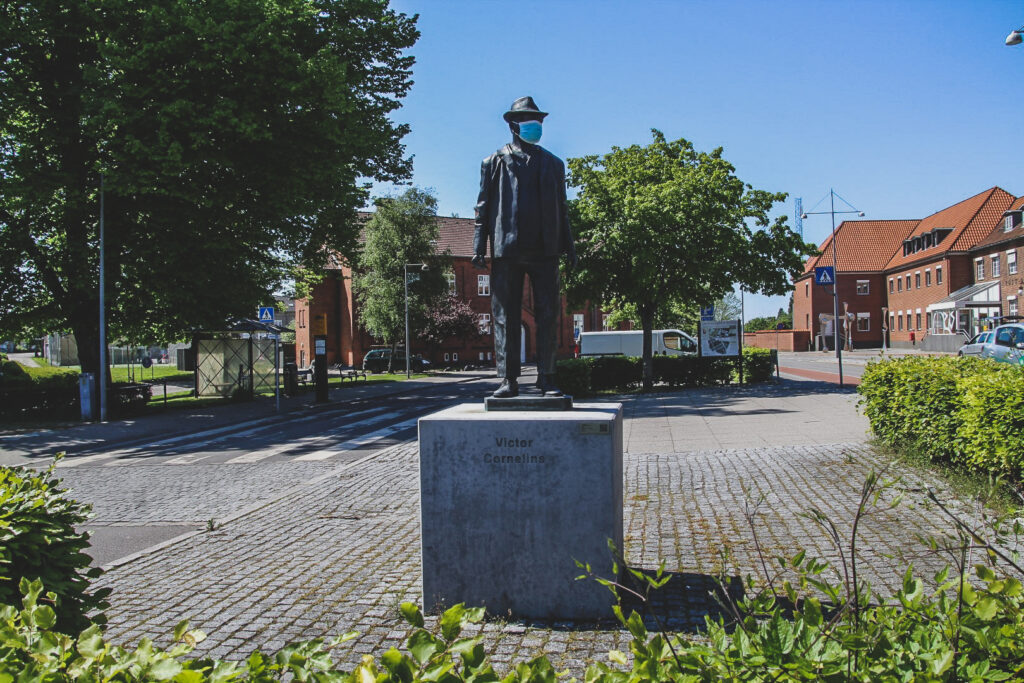
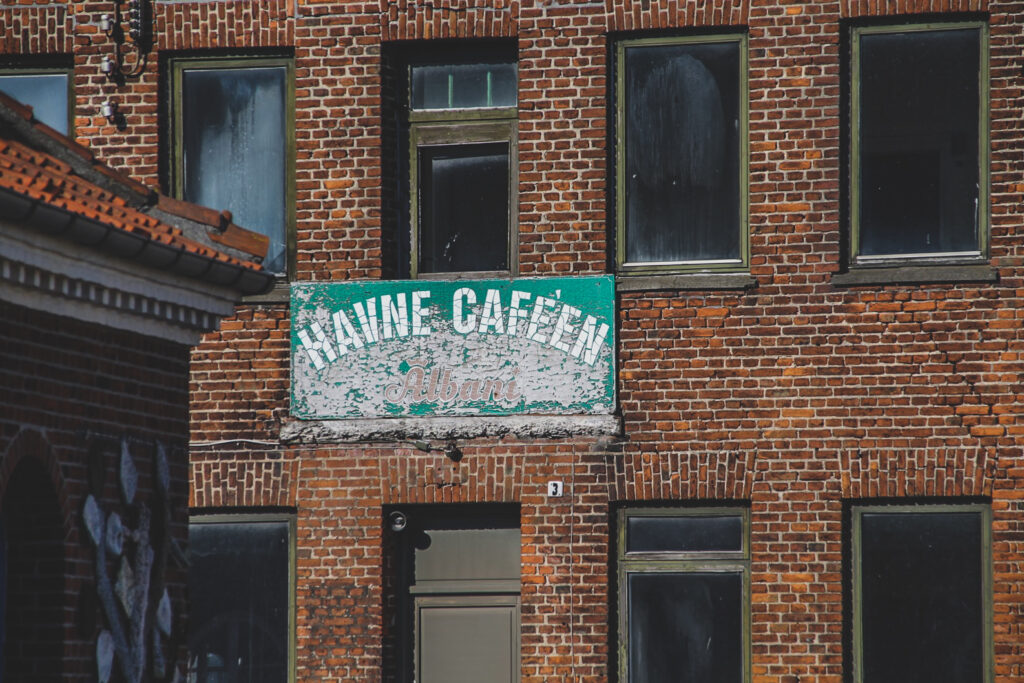
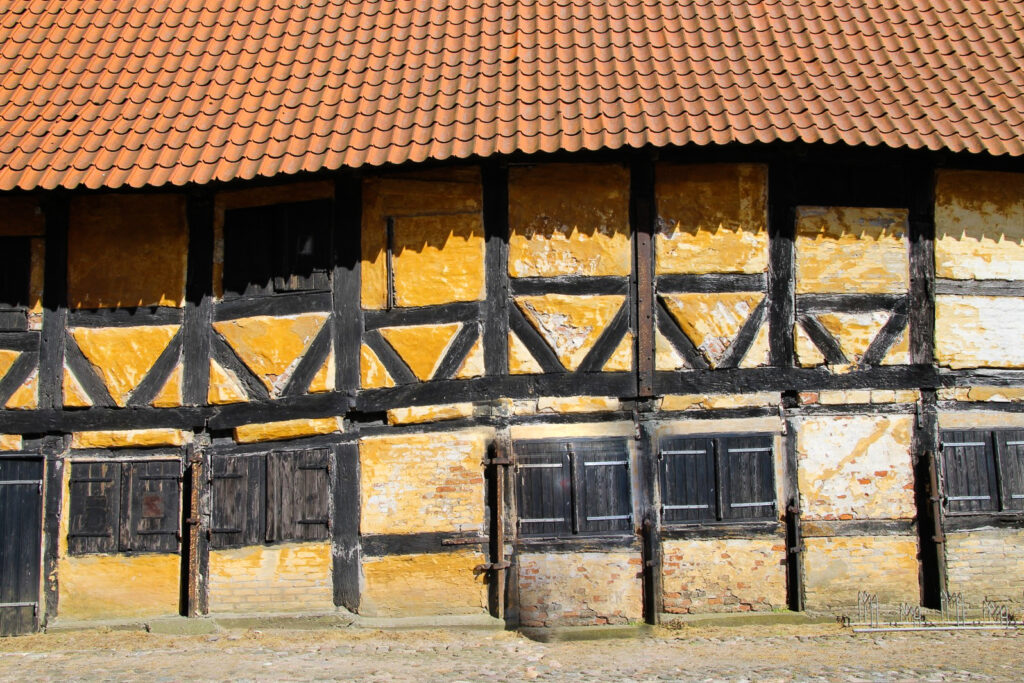
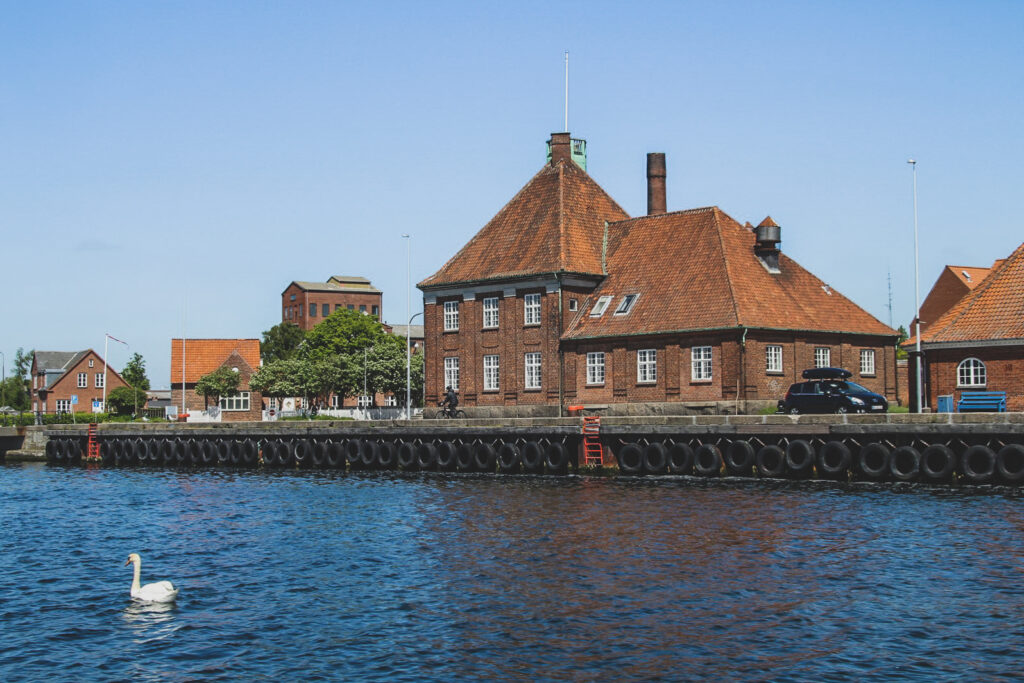
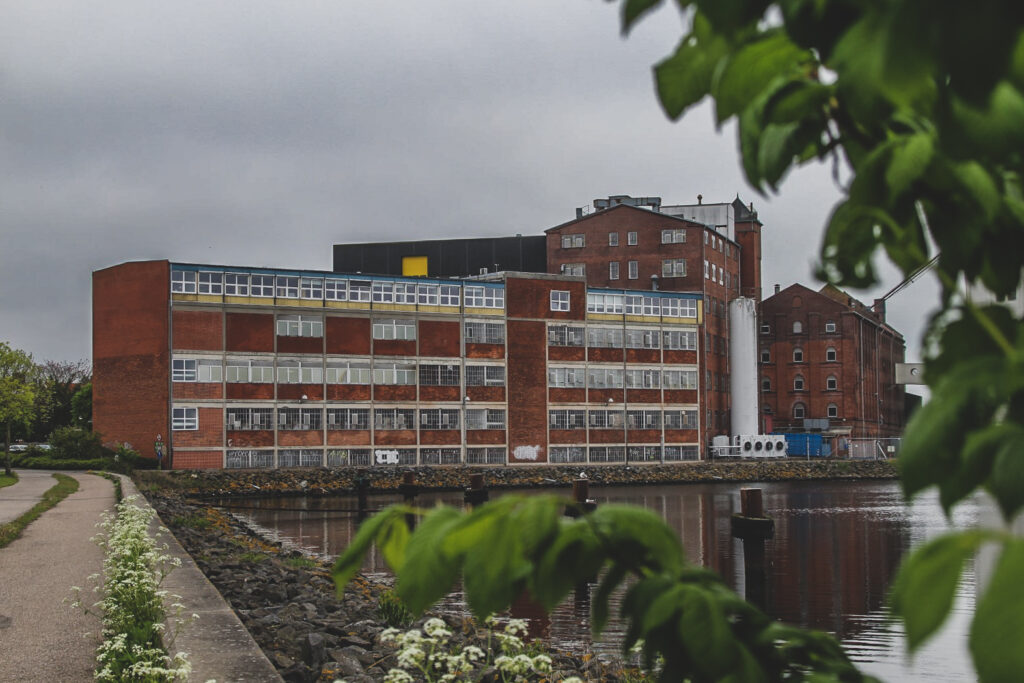
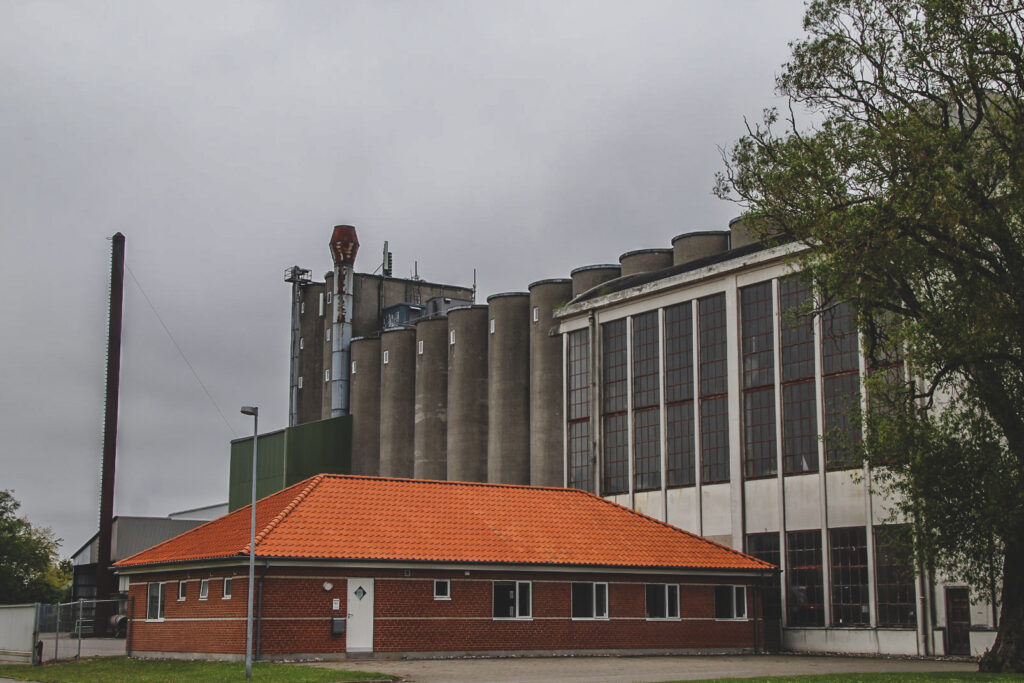
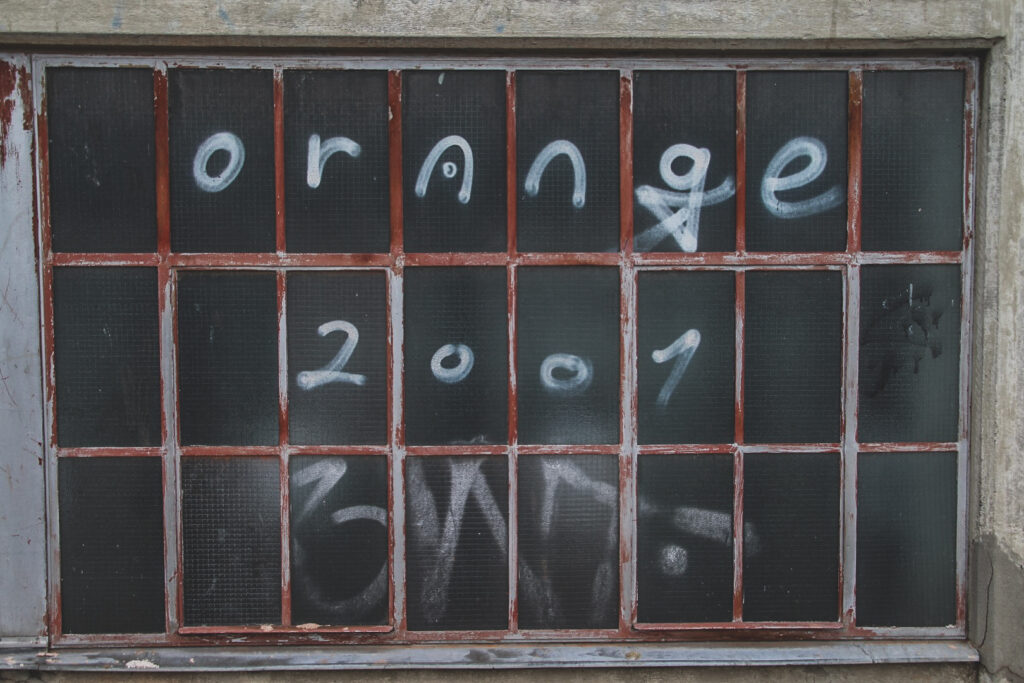
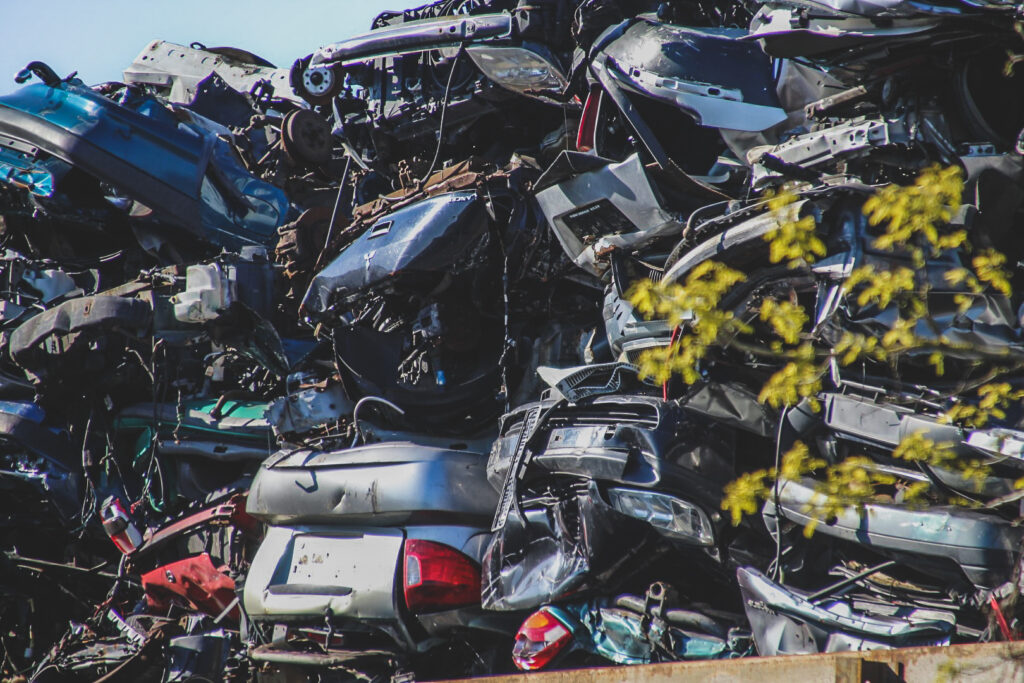


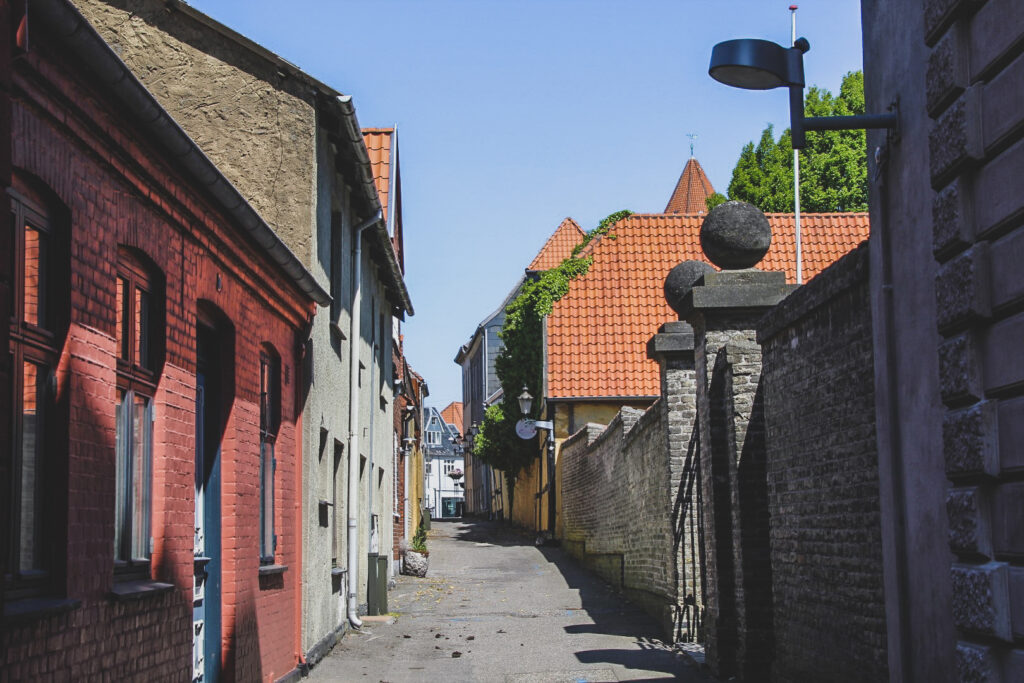

A hike around Nakskov’s inner fjord
One last place that I wanted to experience in Nakskov was the inner fjord where a narrow trail leads right through the middle of it, creating a rather unusual landscape for a beautiful nature hike. The inner fjord gets its water from local streams, and its shore is characterized by marshes and reed forests. The area is home to many different bird species, some of which I met on my hike.
I enjoyed walking in complete solitude as I didn’t meet anyone past the first section, despite the lovely sunny weather. I followed the trail into Krukholmskoven, a nice little wild forest with a primitive shelter site. I took it slow, sat on a few benches and read for a while, enjoying the rare sunshine. This area shows Nakskov from its most beautiful side!
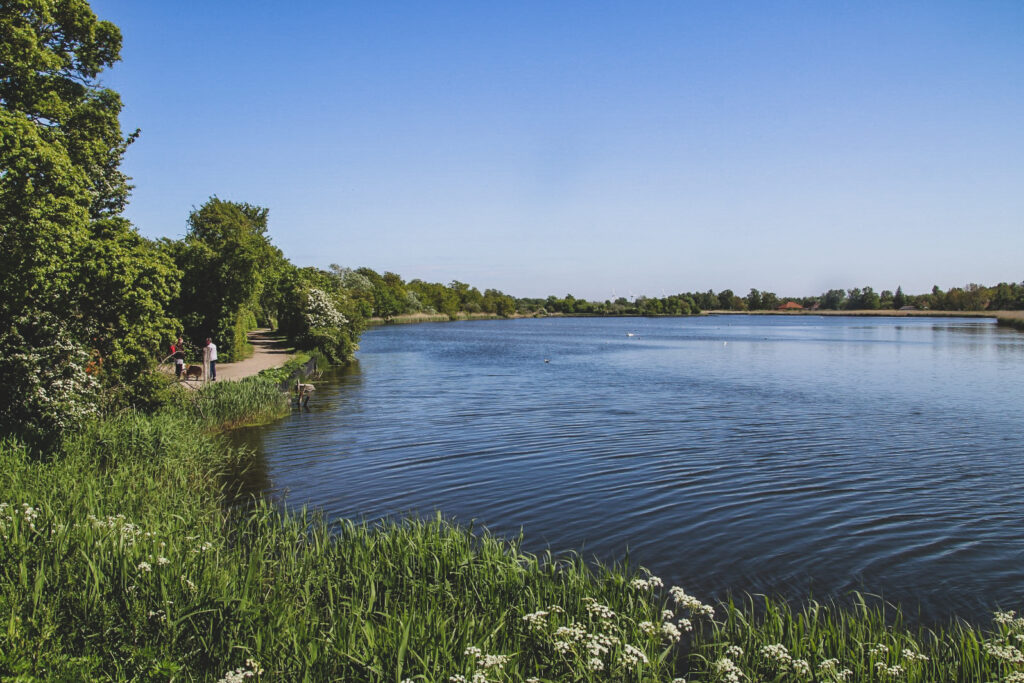
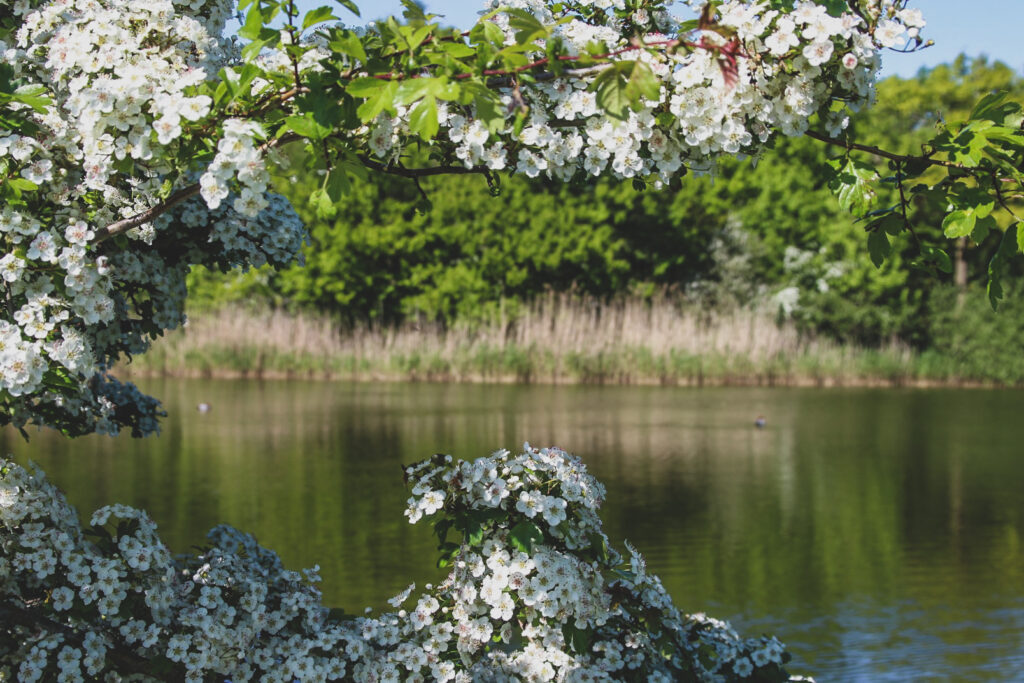
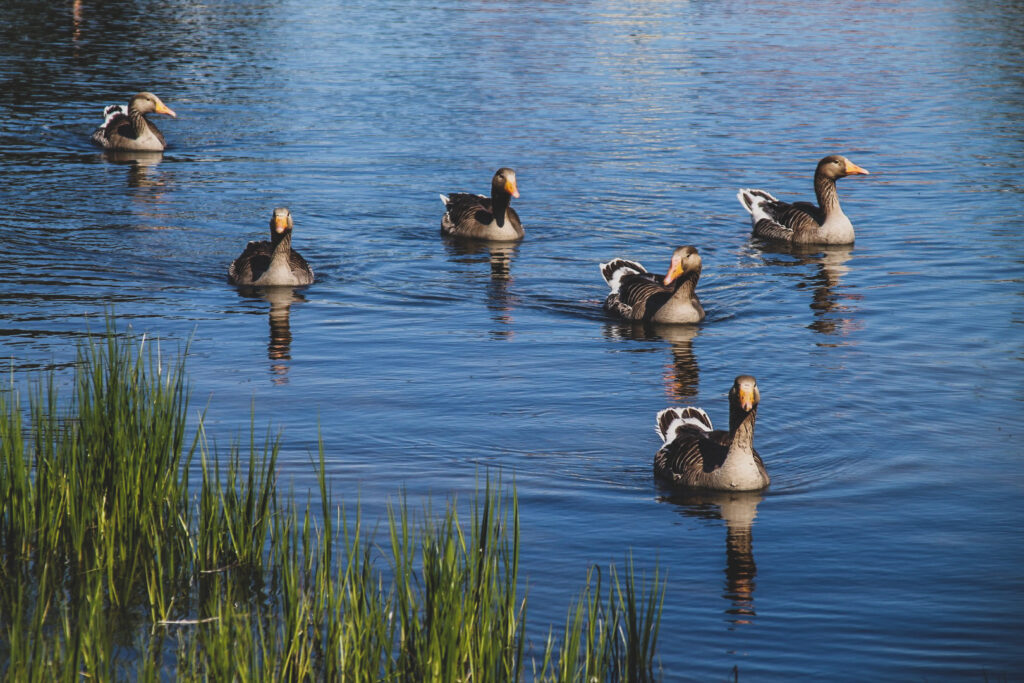

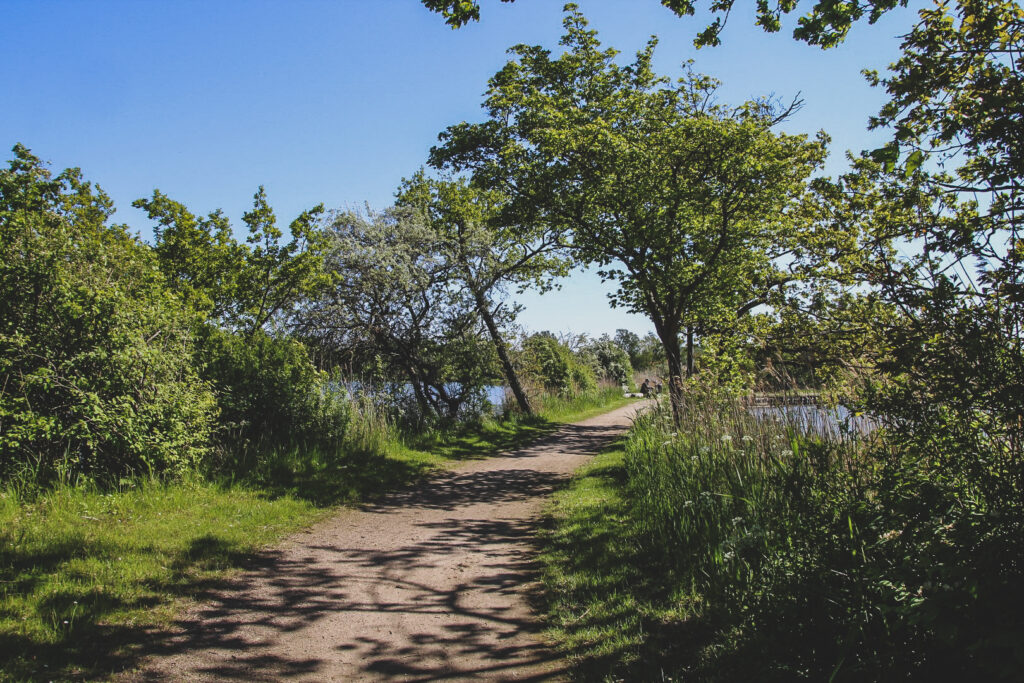

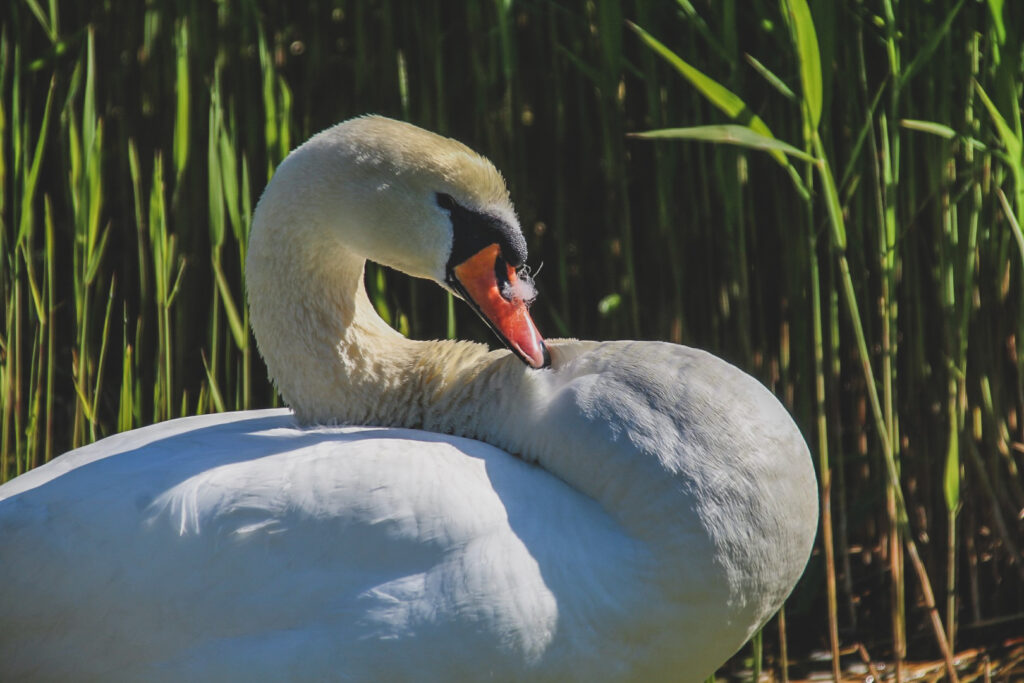
Sunset at Hestehovedet
I arrived back at the campsite in the early evening, and decided to take it easy and read my book for a few hours before heading down to the beach to catch the gorgeous sunset. It had been a long day with lots of small adventures and new impressions, and this was the perfect way to unwind.
I left Nakskov the following morning, full of gratitude after a weekend well spent in the nature surrounding Lolland’s largest town.
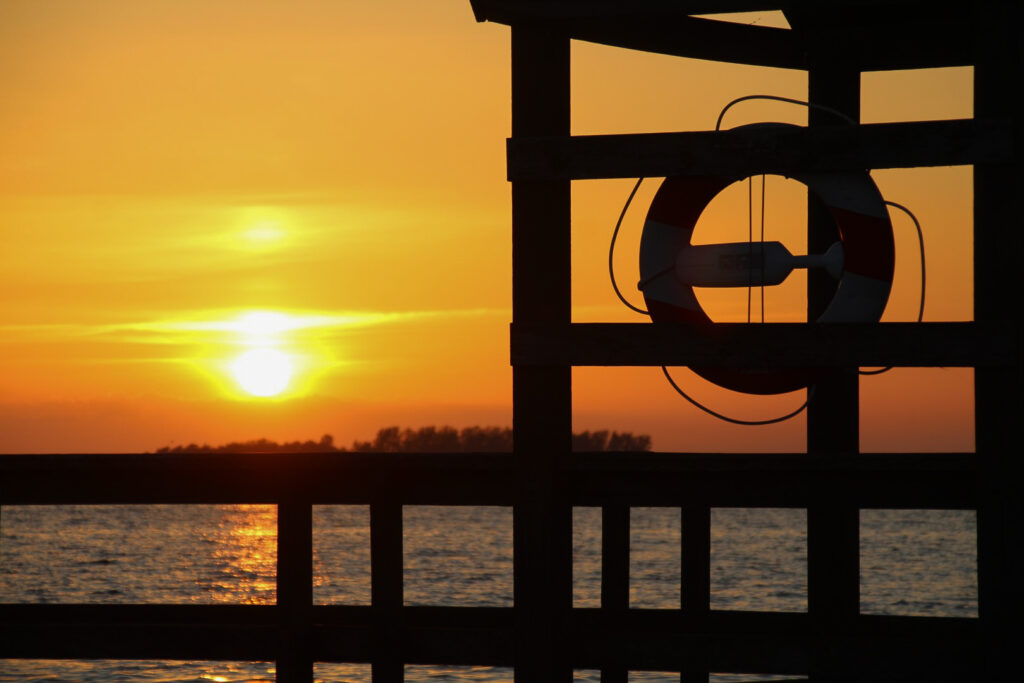
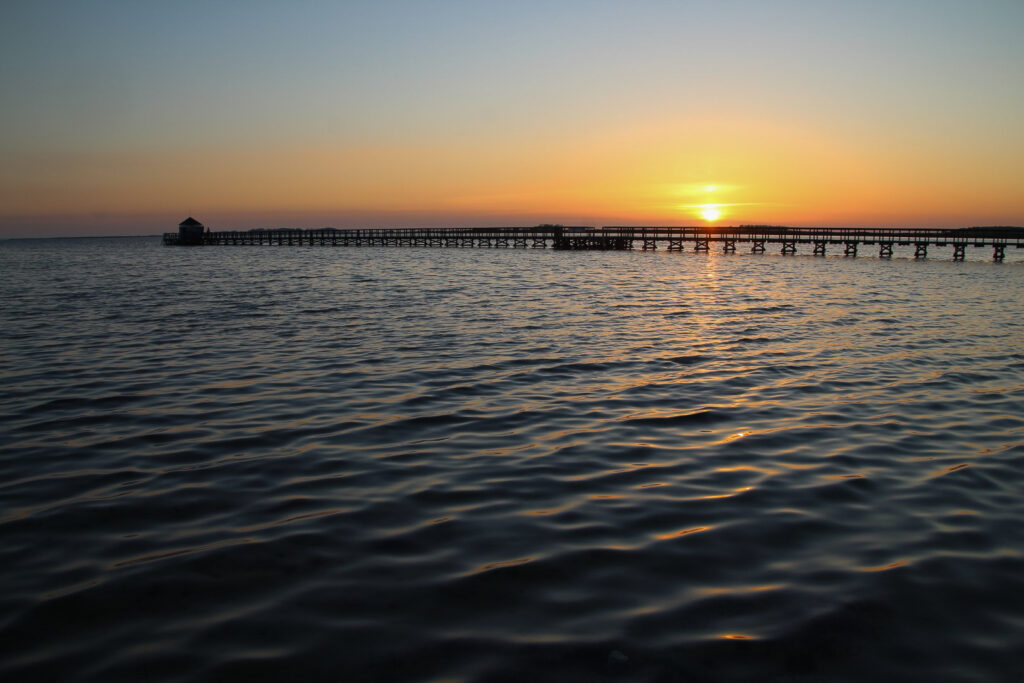
Leave a Comment
Pingback: My December 2022: A teary goodbye to Lolland and a Christmas at home – Northtrotter on 30/09/2022
Pingback: Venture beyond Copenhagen: 20 beautiful places to explore in rural Denmark – Northtrotter on 30/09/2022
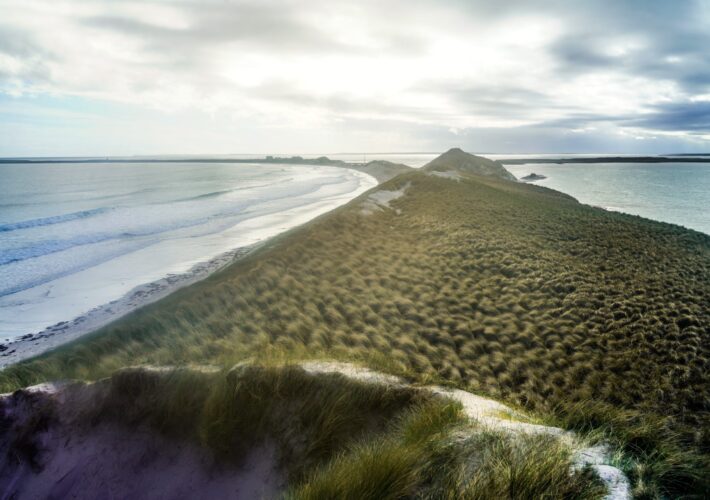
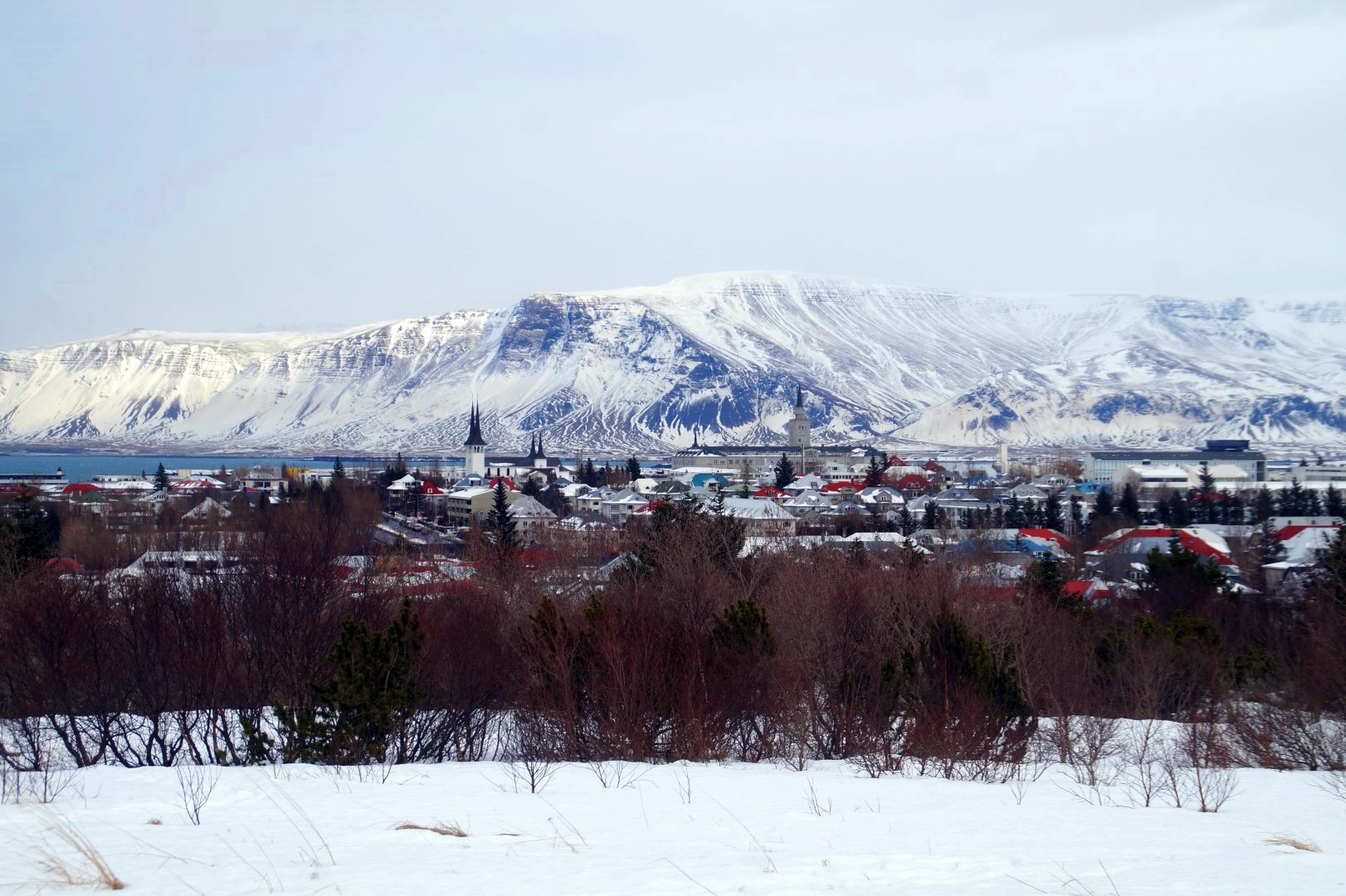
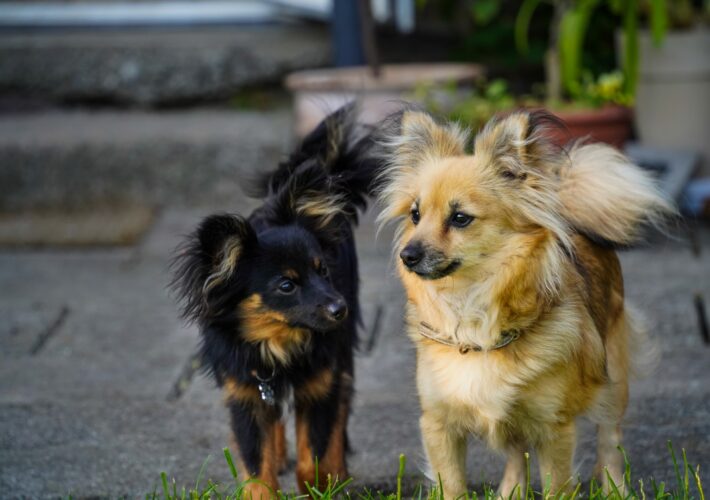

2 COMMENTS